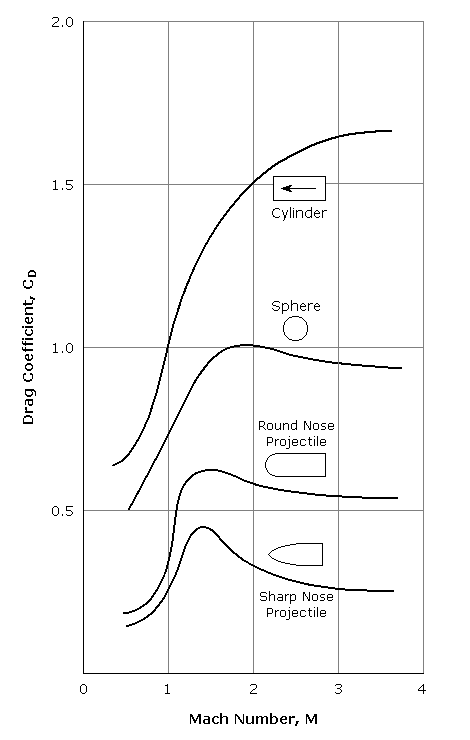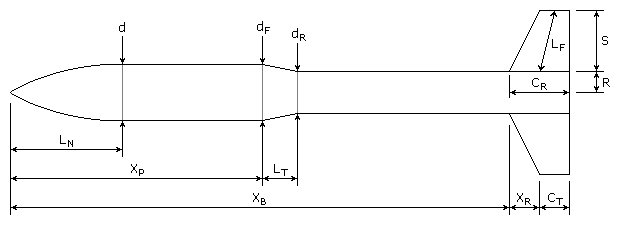I understand that this could be more a subject for our Aerospace Engineer Bruno to speak about, when he fancies to come to the forum. Till then, I'll give it a shot with what I have.
Orbital mechanics, also called flight mechanics, is the study of the motions of artificial satellites and space vehicles moving under the influence of forces such as gravity, atmospheric drag, thrust, etc. Orbital mechanics is a modern offshoot of celestial mechanics which is the study of the motions of natural celestial bodies such as the moon and planets. The root of orbital mechanics can be traced back to the 17th century when mathematician Isaac Newton (1642-1727) put forward his laws of motion and formulated his law of universal gravitation. The engineering applications of orbital mechanics include ascent trajectories, reentry and landing, rendezvous computations, and lunar and interplanetary trajectories.
Conic Sections
A conic section, or just conic, is a curve formed by passing a plane through a right circular cone. As shown in the figure, the angular orientation of the plane relative to the cone determines whether the conic section is a circle, ellipse, parabola, or hyerbola. The circle and the ellipse arise when the intersection of cone and plane is a bounded curve. The circle is a special case of the ellipse in which the plane is perpendicular to the axis of the cone. If the plane is parallel to a generator line of the cone, the conic is called a parabola. Finally, if the intersection is an unbounded curve and the plane is not parallel to a generator line of the cone, the figure is a hyperbola. In the latter case the plane will intersect both halves of the cone, producing two separate curves.
We can define all conic sections in terms of the eccentricity. The type of conic section is also related to the semi-major axis and the energy. The table below shows the relationships between eccentricity, semi-major axis, and energy and the type of conic section.

Satellite orbits can be any of the four conic sections. In this section we will discuss bounded conic orbits, i.e. circles and ellipses
Orbital Elements
To mathematically describe an orbit one must define six quantities, called orbital elements. They are
* Semi-Major Axis, a
* Eccentricity, e
* Inclination, i
* Argument of Periapsis,
* Time of Periapsis Passage, T
* Longitude of Ascending Node
An orbiting satellite follows an oval shaped path known as an ellipse with the body being orbited, called the primary, located at one of two points called foci. An ellipse is defined to be a curve with the following property: for each point on an ellipse, the sum of its distances from two fixed points, called foci, is constant (see figure to right). The longest and shortest lines that can be drawn through the center of an ellipse are called the major axis and minor axis, respectively. The semi-major axis is one-half of the major axis and represents a satellite's mean distance from its primary. Eccentricity is the distance between the foci divided by the length of the major axis and is a number between zero and one. An eccentricity of zero indicates a circle.
Inclination is the angular distance between a satellite's orbital plane and the equator of its primary (or the ecliptic plane in the case of heliocentric, or sun centered, orbits). An inclination of zero degrees indicates an orbit about the primary's equator in the same direction as the primary's rotation, a direction called prograde (or direct). An inclination of 90 degrees indicates a polar orbit. An inclination of 180 degrees indicates a retrograde equatorial orbit. A retrograde orbit is one in which a satellite moves in a direction opposite to the rotation of its primary.
Periapsis is the point in an orbit closest to the primary. The opposite of periapsis, the farthest point in an orbit, is called apoapsis. Periapsis and apoapsis are usually modified to apply to the body being orbited, such as perihelion and aphelion for the Sun, perigee and apogee for Earth, perijove and apojove for Jupiter, perilune and apolune for the Moon, etc. The argument of periapsis is the angular distance between the ascending node and the point of periapsis (see figure below). The time of periapsis passage is the time in which a satellite moves through its point of periapsis.
Nodes are the points where an orbit crosses a plane, such as a satellite crossing the Earth's equatorial plane. If the satellite crosses the plane going from south to north, the node is the ascending node; if moving from north to south, it is the descending node. The longitude of the ascending node is the node's celestial longitude. Celestial longitude is analogous to longitude on Earth and is measured in degrees counter-clockwise from zero with zero longitude being in the direction of the vernal equinox.


In general, three observations of an object in orbit are required to calculate the six orbital elements. Two other quantities often used to describe orbits are period and true anomaly. Period, P, is the length of time required for a satellite to complete one orbit. True anomaly, v, is the angular distance of a point in an orbit past the point of periapsis, measured in degrees.
Types Of Orbits
For a spacecraft to achieve Earth orbit, it must be launched to an elevation above the Earth's atmosphere and accelerated to orbital velocity. The most energy efficient orbit, that is one that requires the least amount of propellant, is a direct low inclination orbit. To achieve such an orbit, a spacecraft is launched in an eastward direction from a site near the Earth's equator. The advantage being that the rotational speed of the Earth contributes to the spacecraft's final orbital speed. At the United States' launch site in Cape Canaveral (28.5 degrees north latitude) a due east launch results in a "free ride" of 1,471 km/h (914 mph). Launching a spacecraft in a direction other than east, or from a site far from the equator, results in an orbit of higher inclination. High inclination orbits are less able to take advantage of the initial speed provided by the Earth's rotation, thus the launch vehicle must provide a greater part, or all, of the energy required to attain orbital velocity. Although high inclination orbits are less energy efficient, they do have advantages over equatorial orbits for certain applications. Below we describe several types of orbits and the advantages of each:
Geosynchronous orbits (GEO) are circular orbits around the Earth having a period of 24 hours. A geosynchronous orbit with an inclination of zero degrees is called a geostationary orbit. A spacecraft in a geostationary orbit appears to hang motionless above one position on the Earth's equator. For this reason, they are ideal for some types of communication and meteorological satellites. A spacecraft in an inclined geosynchronous orbit will appear to follow a regular figure-8 pattern in the sky once every orbit. To attain geosynchronous orbit, a spacecraft is first launched into an elliptical orbit with an apogee of 35,786 km (22,236 miles) called a geosynchronous transfer orbit (GTO). The orbit is then circularized by firing the spacecraft's engine at apogee.
Polar orbits (PO) are orbits with an inclination of 90 degrees. Polar orbits are useful for satellites that carry out mapping and/or surveillance operations because as the planet rotates the spacecraft has access to virtually every point on the planet's surface.
Walking orbits: An orbiting satellite is subjected to a great many gravitational influences. First, planets are not perfectly spherical and they have slightly uneven mass distribution. These fluctuations have an effect on a spacecraft's trajectory. Also, the sun, moon, and planets contribute a gravitational influence on an orbiting satellite. With proper planning it is possible to design an orbit which takes advantage of these influences to induce a precession in the satellite's orbital plane. The resulting orbit is called a walking orbit, or precessing orbit.
Sun synchronous orbits (SSO) are walking orbits whose orbital plane precesses with the same period as the planet's solar orbit period. In such an orbit, a satellite crosses periapsis at about the same local time every orbit. This is useful if a satellite is carrying instruments which depend on a certain angle of solar illumination on the planet's surface. In order to maintain an exact synchronous timing, it may be necessary to conduct occasional propulsive maneuvers to adjust the orbit.
Molniya orbits are highly eccentric Earth orbits with periods of approximately 12 hours (2 revolutions per day). The orbital inclination is chosen so the rate of change of perigee is zero, thus both apogee and perigee can be maintained over fixed latitudes. This condition occurs at inclinations of 63.4 degrees and 116.6 degrees. For these orbits the argument of perigee is typically placed in the southern hemisphere, so the satellite remains above the northern hemisphere near apogee for approximately 11 hours per orbit. This orientation can provide good ground coverage at high northern latitudes.
Hohmann transfer orbits are interplanetary trajectories whose advantage is that they consume the least possible amount of propellant. A Hohmann transfer orbit to an outer planet, such as Mars, is achieved by launching a spacecraft and accelerating it in the direction of Earth's revolution around the sun until it breaks free of the Earth's gravity and reaches a velocity which places it in a sun orbit with an aphelion equal to the orbit of the outer planet. Upon reaching its destination, the spacecraft must decelerate so that the planet's gravity can capture it into a planetary orbit.
To send a spacecraft to an inner planet, such as Venus, the spacecraft is launched and accelerated in the direction opposite of Earth's revolution around the sun (i.e. decelerated) until it achieves a sun orbit with a perihelion equal to the orbit of the inner planet. It should be noted that the spacecraft continues to move in the same direction as Earth, only more slowly.
To reach a planet requires that the spacecraft be inserted into an interplanetary trajectory at the correct time so that the spacecraft arrives at the planet's orbit when the planet will be at the point where the spacecraft will intercept it. This task is comparable to a quarterback "leading" his receiver so that the football and receiver arrive at the same point at the same time. The interval of time in which a spacecraft must be launched in order to complete its mission is called a launch window.
Newton's Laws of Motion and Universal Gravitation
Newton's laws of motion describe the relationship between the motion of a particle and the forces acting on it.
The first law states that if no forces are acting, a body at rest will remain at rest, and a body in motion will remain in motion in a straight line. Thus, if no forces are acting, the velocity (both magnitude and direction) will remain constant.
The second law tells us that if a force is applied there will be a change in velocity, i.e. an acceleration, proportional to the magnitude of the force and in the direction in which the force is applied. This law may be summarized by the equation

where F is the force, m is the mass of the particle, and a is the acceleration.
The third law states that if body 1 exerts a force on body 2, then body 2 will exert a force of equal strength, but opposite in direction, on body 1. This law is commonly stated, "for every action there is an equal and opposite reaction".
In his law of universal gravitation, Newton states that two particles having masses m1 and m2 and separated by a distance r are attracted to each other with equal and opposite forces directed along the line joining the particles. The common magnitude F of the two forces is

where G is an universal constant, called the constant of gravitation, and has the value 6.67259x10-11 N-m2/kg2 (3.4389x10-8 lb-ft2/slug2).
Let's now look at the force that the Earth exerts on an object. If the object has a mass m, and the Earth has mass M, and the object's distance from the center of the Earth is r, then the force that the Earth exerts on the object is GmM /r2 . If we drop the object, the Earth's gravity will cause it to accelerate toward the center of the Earth. By Newton's second law (F = ma), this acceleration g must equal (GmM /r2)/m, or

At the surface of the Earth this acceleration has the valve 9.80665 m/s2 (32.174 ft/s2).
More to come later
